Warehouse safety is pivotal in protecting employees, safeguarding assets, and ensuring the smooth operation of daily activities. The complexity of modern warehouses—often filled with heavy machinery, hazardous materials, and intricate storage systems, demands robust safety protocols. In this article, we will be covering the importance of warehouse safety and what business owners can do to improve their current safety procedures.
The Importance Of Warehouse Safety For Efficient Operations
Warehouse safety is crucial not only for protecting the health and well-being of employees but also for ensuring efficient and smooth operations. When safety is prioritized, it leads to fewer accidents, injuries, and disruptions, which directly impacts productivity and operational efficiency. Warehouse safety:
- Helps Minimize Downtime: Prioritizing safety in the warehouse environment significantly reduces the risk of accidents, which in turn minimizes downtime. When workers are injured, it can cause operations to slow down or halt entirely, affecting overall productivity. By implementing robust safety protocols, businesses can ensure that operations run continuously without interruptions caused by unsafe practices, thereby maintaining efficiency.
- Improves Worker Morale and Productivity: When employees feel safe in their work environment, they are more confident and focused, which leads to increased productivity. A safe workplace reduces stress and distractions, allowing workers to perform their tasks more efficiently. Additionally, a strong safety culture can improve employee retention rates, which means less time and resources spent on hiring and training new staff, helping to maintain consistent operational efficiency.
- Ensures Compliance and Helps Avoid Penalties: Adhering to safety regulations not only helps avoid penalties, fines, and legal issues but also prevents disruptions that could negatively impact operations. Compliance enhances the company’s reputation, leading to better business opportunities. By implementing proactive safety measures, companies can prevent costly incidents that may lead to operational slowdowns or shutdowns, ensuring a smoother and more efficient operation.
- Better Optimizes Workflows and Space Utilization: A warehouse designed with safety in mind often benefits from a more efficient layout, with clear pathways and properly stored materials that streamline operations and reduce the risk of accidents. Moreover, when employees are trained in the safe and correct use of equipment, it ensures that tools and machinery are used efficiently, reducing wear and tear and preventing delays in operations.
- Reduces Costs: Maintaining a strong safety record can result in lower insurance premiums, thereby reducing operational costs. Safe handling practices also reduce the likelihood of damage to goods, ensuring that products are delivered to customers on time and in good condition. This is crucial for maintaining smooth operations and upholding customer satisfaction.
Material Handling and Storage
Proper organization of materials in a warehouse is not just about maximizing space; it’s about ensuring safety for all employees. Poorly stacked or stored items can easily become hazards, leading to accidents that could cause serious injuries or damage to goods. This is particularly critical in warehouses with high inventory turnover or where large and heavy items are regularly handled. Implementing proper storage techniques helps create a safer work environment and minimizes risks, ensuring that operations can proceed smoothly without unexpected disruptions.
To mitigate these risks, consider the following guidelines:
- Stability Matters: Always place heavier items at the bottom of stacks and lighter items on top. This practice prevents tipping and makes the stacks more stable.
- Clear Aisles: Ensure that aisles are wide enough and free from obstructions. This allows for the safe movement of both personnel and machinery.
- Regular Inspections: Conduct frequent inspections to confirm that storage areas remain organized and that stacks are stable over time. Regular checks help identify potential hazards before they cause problems.
Equipment and Machinery Safety
In any warehouse, the safe operation of equipment and machinery is critical to maintaining a secure working environment. Forklifts, conveyor systems, and automated equipment play vital roles in daily operations, but they also pose significant risks if not properly managed. Ensuring the safety of these machines involves more than just initial training—it requires ongoing vigilance, regular maintenance, and strict adherence to safety protocols. Without these precautions, the potential for accidents and injuries increases, putting both employees and the efficiency of operations at risk.
Forklift Safety
Forklifts are indispensable in warehouse operations, yet they are involved in a significant number of workplace injuries each year. Ensuring forklift safety goes beyond just training operators; it requires a comprehensive approach that includes regular equipment maintenance and effective traffic management within the warehouse.
- Regular Maintenance: Conduct routine checks and maintenance on forklifts to prevent mechanical failures that could lead to accidents.
- Operator Certification: Ensure all forklift operators are certified and undergo regular retraining to stay updated on safety practices and new equipment.
- Traffic Management: Establish clear traffic routes within the warehouse, complete with speed limits, stop signs, and designated pedestrian zones, to minimize the risk of collisions.
Conveyor Systems and Automation
While conveyor belts and automated systems greatly enhance efficiency, they can also introduce new hazards if not properly managed. Safety measures are essential to protect workers from the dangers associated with moving machinery.
- Safety Guards: Install safety guards around conveyor systems to prevent accidental contact with moving parts.
- Emergency Shut-Offs: Make sure all employees are aware of the locations of emergency stop buttons and are trained on how to use them effectively in case of an emergency.
- Regular Maintenance: Just like forklifts, conveyor systems require regular maintenance to prevent breakdowns and ensure they operate safely.
Fire Safety
Ensuring fire safety in a warehouse environment is a critical aspect of overall safety management. Warehouses are often filled with flammable materials, complex electrical systems, and high-powered machinery, all of which can contribute to fire risks. A proactive approach to fire safety involves not only identifying and mitigating potential hazards but also ensuring that all employees are prepared to act swiftly in the event of an emergency. Effective fire prevention and preparedness strategies can significantly reduce the likelihood of fire-related incidents, protecting both lives and assets.
Fire Prevention Strategies
Preventing fires before they start is the first line of defense. This involves identifying potential hazards and implementing strict safety protocols to minimize risks.
- Regular Risk Assessments: Conduct thorough assessments to identify fire hazards such as flammable materials, faulty wiring, or malfunctioning equipment. Take immediate action to mitigate these risks.
- Strict Smoking Policies: Implement and enforce strict smoking policies, designating smoking areas far away from the warehouse to prevent accidental fires.
- Housekeeping: Maintain clean and clutter-free storage areas to minimize the accumulation of flammable materials, reducing the overall fire risk.
Fire Emergency Readiness
Being prepared to respond effectively in the event of a fire is just as crucial as preventing one. Ensuring that your warehouse is equipped with the necessary tools and that employees are trained can make a significant difference in minimizing damage and injuries.
- Accessible Fire Extinguishers: Place fire extinguishers in easily accessible locations throughout the warehouse. Ensure that all employees know where they are and how to use them properly.
- Regular Drills: Conduct fire drills on a regular basis to familiarize employees with evacuation routes and emergency procedures. This helps ensure a quick and orderly response in case of an actual fire.
Key Statistic: According to the National Fire Protection Association (NFPA), nearly 20% of warehouse fires are caused by electrical failures. Regular inspections and maintenance of electrical systems can help prevent these types of incidents, significantly reducing the risk of a catastrophic fire.
Preparing For Emergencies
In a warehouse environment, emergencies can arise unexpectedly and take many forms, including fires, chemical spills, and medical incidents. A well-developed emergency preparedness plan is crucial for ensuring that all employees know how to respond quickly and effectively in these situations. The key to minimizing the impact of any emergency lies in detailed planning, clear communication, and regular training. By preparing for the unexpected, warehouses can protect their employees and minimize potential disruptions to operations.
Creating a comprehensive emergency preparedness plan involves addressing a variety of potential scenarios and ensuring that all employees are familiar with the procedures.
- Comprehensive Procedures: Develop detailed procedures for different types of emergencies. This should include evacuation plans, communication protocols, and specific actions for scenarios like fires, chemical spills, or severe weather.
- First Aid Kits: Place first aid kits in easily accessible locations throughout the warehouse. Ensure that employees are trained in basic first aid and CPR, so they can respond effectively in the event of an injury.
- Regular Drills: Conduct regular emergency drills to reinforce procedures and ensure that all employees know what to do in case of an actual emergency. Drills help to keep responses sharp and reduce panic during real situations.
Slip, Trip, and Fall Prevention
Slip, trip, and fall incidents are among the most common types of workplace injuries, accounting for 25% of all injury claims on the job. These are often resulted from poor housekeeping, inadequate lighting, or lack of proper safety protocols. These accidents can lead to serious injuries and disrupt operations, making it essential to implement preventive measures. Maintaining a clean and well-organized work environment, combined with clear safety signage and proactive hazard management, can significantly reduce the risk of these incidents.
Preventing slips, trips, and falls in a warehouse environment requires a combination of vigilant housekeeping practices and effective safety measures.
- Immediate Cleanup: Ensure that spills are cleaned up immediately to prevent slippery surfaces. Floors should be kept dry and free from obstructions at all times.
- Proper Markings: Use clearly visible floor markings to guide both foot and vehicle traffic safely through the warehouse. This helps prevent collisions and missteps that could lead to falls.
- Lighting and Non-Slip Mats: Adequate lighting is essential for visibility in all areas of the warehouse. Consider installing non-slip mats in areas prone to moisture or spills to provide extra traction and reduce the risk of slipping.
Traffic Management
The movement of both individuals and vehicles in the warehouse presents significant safety challenges. Without proper traffic management, the risk of collisions and accidents increases, especially in high-traffic areas like loading docks. Effective traffic management involves clear communication, designated pathways, and stringent safety protocols that ensure the safe interaction of workers and machinery. To manage the flow of traffic safely in a warehouse, it’s crucial to establish clear guidelines and enforce them consistently.
- Designated Lanes: Clearly mark separate lanes for pedestrians and vehicles to minimize the risk of collisions. Pedestrian walkways should be well-defined, and vehicle routes should be marked with visible lines and signs.
- Vehicle Safety: Ensure that all vehicle operators, including those using forklifts and other machinery, are properly trained and certified. Regularly inspect vehicles to ensure they are in safe working condition, with particular attention to brakes, horns, lights, and warning systems.
- Loading Dock Safety: Loading docks are among the most hazardous areas in a warehouse. Mark edges clearly and implement procedures to prevent accidents during loading and unloading. This includes using wheel chocks, dock plates, and ensuring proper alignment of vehicles with the dock.
Health and Wellness
Supporting the health and wellness of employees is a fundamental aspect of maintaining a safe and productive work environment in a warehouse, especially during the hot summer seasons of the year. Physical and mental well-being directly impact an employee’s ability to perform their duties safely and effectively. By prioritizing hydration, nutrition, mental health, and adequate rest, employers can reduce the risk of accidents and enhance overall job satisfaction and productivity. A holistic approach to wellness helps create a work environment where employees feel valued and are more engaged in their roles.
- Hydration and Nutrition: Ensure that clean drinking water is readily available throughout the warehouse. Providing access to healthy food options, such as in a cafeteria or vending machines, encourages employees to make nutritious choices that support sustained energy and focus.
- Mental Health Support: Offer resources for mental health support, such as access to counseling services or stress management programs. Encouraging a work-life balance by promoting reasonable working hours and time off can also help reduce stress and prevent burnout.
- Regular Breaks: Encourage employees to take regular breaks throughout their shifts. Short breaks to rest and recharge can prevent fatigue, which is a common contributor to workplace accidents. Scheduled rest periods are especially important in physically demanding roles.
Security Measures
Security measures are critical for keeping both a warehouse and its staff safe by preventing unauthorized access, theft, and potential harm. Here’s how these measures contribute to safety:
- Access Control Systems: Implementing access control systems, such as key cards, biometric scanners, or coded entry systems, restricts entry to authorized personnel only. This reduces the risk of unauthorized individuals entering the warehouse, which could lead to theft or intentional harm.
- Surveillance Cameras: Installing CCTV cameras throughout the warehouse provides continuous monitoring of activities. This deters criminal behavior, helps identify potential security breaches, and provides valuable evidence in the event of an incident.
- Alarm Systems: Integrating alarm systems that detect unauthorized access, fires, or other emergencies ensures a quick response. These systems can alert security personnel or local authorities, minimizing damage and ensuring the safety of both the warehouse and its staff.
- Perimeter Security: Fencing, security gates, and locked entry points help secure the warehouse perimeter, preventing unauthorized access to the premises. Proper lighting around the exterior also deters potential intruders and enhances visibility for security patrols.
- Security Personnel: Employing trained security guards to monitor the warehouse, control access, and respond to incidents provides an additional layer of protection. Security personnel can also assist with regular safety checks and emergency response coordination.
- Inventory Control: Implementing inventory control systems, such as RFID tracking or barcode scanners, helps monitor and manage stock levels. This not only prevents theft but also ensures that any discrepancies are quickly identified and investigated.
- Employee Background Checks: Conducting thorough background checks on employees helps ensure that staff members are trustworthy and do not pose a security risk. This practice minimizes the likelihood of internal theft or sabotage.
- Visitor Management: A visitor management system tracks and monitors all non-employees who enter the warehouse. Visitors are often required to sign in, wear identification badges, and be accompanied by authorized personnel, reducing the risk of unauthorized activities.
- Regular Security Audits: Conducting regular security audits identifies vulnerabilities and ensures that all security measures are functioning correctly. Any gaps in security are addressed promptly to maintain a safe environment.
- Emergency Protocols: Establishing clear protocols for security-related emergencies, such as break-ins or suspicious activity, ensures that staff know how to respond effectively. This preparation helps mitigate risks and maintain a safe working environment.
Safety Audits
Regular safety audits play a crucial role in maintaining a safe warehouse environment for both the facility and its staff by identifying and mitigating potential hazards before they lead to accidents or injuries. Here’s how they contribute to safety:
- Hazard Identification: Safety audits involve a thorough inspection of the warehouse to identify existing and potential hazards, such as malfunctioning equipment, improper storage practices, or blocked emergency exits. By detecting these issues early, corrective actions can be taken to prevent accidents.
- Compliance Verification: Audits ensure that the warehouse adheres to relevant health, safety, and environmental regulations. Staying compliant with these regulations helps avoid legal penalties and ensures that the warehouse meets industry standards for a safe working environment.
- Preventive Maintenance: Regular audits often include checks on equipment and infrastructure, ensuring that everything is functioning correctly and safely. This proactive approach reduces the likelihood of equipment failure that could lead to accidents, such as forklifts breaking down or shelving units collapsing.
- Improvement of Safety Procedures: Audits review the effectiveness of existing safety protocols and procedures. If gaps or weaknesses are found, the procedures can be revised or enhanced, leading to better protection for staff and more efficient responses to potential emergencies.
- Employee Awareness and Training: Conducting audits reinforces the importance of safety among employees. It serves as a reminder of the correct safety practices and can highlight areas where additional training may be needed. This continuous focus on safety helps keep staff vigilant and knowledgeable about how to maintain a safe workplace.
- Incident Prevention: By systematically identifying and addressing risks, regular safety audits help prevent workplace incidents before they occur. This proactive approach not only protects employees from harm but also minimizes the likelihood of disruptions to operations due to safety-related issues.
- Documentation and Accountability: Audits create a record of safety conditions and corrective actions taken, promoting accountability within the organization. This documentation is valuable for tracking safety performance over time and ensuring that any identified issues are promptly resolved.
- Fostering a Safety Culture: Regular audits demonstrate the organization’s commitment to safety, fostering a culture where safety is a shared responsibility among all employees. When staff see that management prioritizes safety, they are more likely to adhere to safety practices and report potential hazards.
Best Practices for Ensuring Warehouse Safety
Ensuring safety in a warehouse is a multifaceted endeavor that requires a proactive approach to managing risks, engaging employees, and utilizing technology. Below, we’ve put together some of the most essential best practices that can help businesses with their warehouse safety commitments.
- Developing and Enforcing Standard Operating Procedures (SOPs): Establishing clear and detailed SOPs is essential for maintaining safety in the warehouse. These procedures should cover all operational tasks, ensuring that employees have consistent guidelines to follow. Regular reviews and updates to SOPs are crucial to adapt to changes in operations or regulations, and consistent enforcement by supervisors helps maintain high safety standards.
- Regularly Update Safety Protocols Based on New Risks and Regulations: Safety protocols must be regularly updated to address emerging risks and comply with evolving regulations. Conducting periodic risk assessments and staying informed about industry changes ensures that safety measures are both current and effective. Involving a cross-functional team in these updates can provide a comprehensive approach to identifying and mitigating new hazards.
- Have Comprehensive Onboarding Safety Training: A thorough onboarding program that emphasizes safety is vital for new employees. It should include a mix of classroom instruction and hands-on training, ensuring that new hires understand safety protocols before starting work. Pairing them with experienced mentors during the initial period can reinforce safe practices and foster a strong safety culture from the beginning.
- Provide Continuous Education and Engagement Initiatives: Ongoing safety training and engagement initiatives help maintain a high level of safety awareness among employees. Regular training sessions, safety drills, and interactive workshops keep safety practices fresh in employees’ minds. Engaging employees in safety planning and encouraging feedback helps build a culture of safety where everyone feels responsible and involved.
- Leverage Data Analytics for Predictive Safety Measures: Utilizing data analytics allows warehouse managers to identify trends and predict potential safety incidents before they occur. By analyzing past incidents and operational data, managers can make informed decisions to enhance safety measures. Predictive analytics enables proactive interventions, such as targeted training or workflow adjustments, to prevent accidents.
- Encourage Reporting of Hazards and Near-Misses: A strong safety culture encourages the reporting of hazards and near-misses without fear of retaliation. Clear reporting channels, such as anonymous tools or designated safety officers, help capture valuable safety information. Regularly reviewing and addressing these reports demonstrates a commitment to safety and reinforces the importance of employee contributions to a safe workplace.
- Recognize and Reward Safe Behaviors: Recognizing and rewarding safe behaviors motivates employees to maintain high safety standards. Implementing a safety incentive program that acknowledges employees who follow safety protocols or contribute to safety improvements can enhance engagement. Regular recognition, whether through formal awards or informal acknowledgment, reinforces the value of safe behavior and encourages a culture where safety is prioritized.
Challenges and Solutions in Warehouse Safety
Addressing the Complexity of Modern Warehouse Operations
Challenge: Warehouses today are larger, more complex, and highly automated. Managing safety in such environments requires balancing human labor with machinery, technology, and intricate workflows. The integration of automated systems like conveyors, robots, and forklifts introduces new risks, such as collisions, malfunctions, and operator errors.
Solution: Implementing a comprehensive safety management system (SMS) that includes regular risk assessments, employee training on new technologies, and a clear communication protocol for reporting hazards can help mitigate these risks. Additionally, using real-time data analytics to monitor operations and predict potential safety incidents allows for proactive intervention.
Managing High Employee Turnover and Ensuring Consistent Safety Practices
Challenge: Warehousing often experiences high employee turnover, which can lead to inconsistent safety practices. New employees may lack the necessary training or understanding of safety protocols, increasing the risk of accidents.
Solution: To combat this, establish a robust onboarding process that prioritizes safety training. Regularly scheduled refresher courses and mentorship programs where experienced employees guide newcomers can ensure that safety standards are consistently met. Implementing safety incentive programs can also encourage long-term employees to adhere to and promote safety practices.
Handling Ergonomic Risks and Repetitive Strain Injuries
Challenge: Warehouse workers often perform repetitive tasks, such as lifting, bending, and carrying heavy loads, which can lead to ergonomic issues and repetitive strain injuries. Poorly designed workstations and inadequate lifting techniques further increase the risk of musculoskeletal disorders.
Solution: Ergonomic assessments should be conducted regularly to identify potential hazards. Introducing mechanical aids, like lift-assist devices, and training employees on proper lifting techniques can reduce the physical strain on workers. Additionally, rotating tasks to prevent repetitive motions and encouraging regular breaks can help mitigate these risks.
Ensuring Compliance with Evolving Regulations
Challenge: Safety regulations and standards for warehouses are constantly evolving, and non-compliance can result in fines, legal issues, and increased accident risks. Keeping up with these changes and ensuring that all safety practices align with current regulations can be challenging, especially for large operations.
Solution: Establish a dedicated compliance team or assign a safety officer responsible for monitoring regulatory changes and updating safety protocols accordingly. Regular training sessions should be conducted to educate employees about new regulations. Utilizing compliance management software can also streamline the process of tracking and implementing regulatory updates.
Summarizing Warehouse Safety
In summary, keeping a warehouse safe involves implementing a combination of best practices, safety protocols, and regular maintenance. Key strategies include:
- Employee Training: Regularly train employees on safety procedures, including proper handling of equipment, use of personal protective equipment (PPE), and emergency response plans. Ensure that all staff are aware of potential hazards and how to avoid them.
- Proper Equipment Maintenance: Regularly inspect and maintain warehouse equipment, such as forklifts, conveyors, and shelving units, to prevent malfunctions that could lead to accidents. Ensure all equipment is operated by trained personnel only.
- Clear Signage and Labeling: Use clear signage to mark hazards, emergency exits, and safety zones. Label storage areas clearly, especially for hazardous materials, to ensure that everyone knows where items are located and how to handle them safely.
- Housekeeping and Organization: Maintain a clean and organized warehouse to prevent accidents caused by clutter, spills, or misplaced items. Ensure that aisles, exits, and emergency equipment are unobstructed at all times.
- Security Measures: Implement robust security protocols, including surveillance cameras, access control systems, and alarm systems, to protect the warehouse from theft and unauthorized access.
- Ergonomic Practices: Encourage ergonomic practices to reduce the risk of injuries from repetitive motion, heavy lifting, or improper posture. Provide tools like pallet jacks, lifting aids, and adjustable workstations to minimize strain on workers.
- Fire Safety: Install and regularly test fire detection and suppression systems, such as smoke detectors, sprinklers, and fire extinguishers. Conduct fire drills and ensure that all employees know the evacuation routes.
- Regular Safety Audits: Conduct regular safety audits and inspections to identify potential hazards and areas for improvement. Address any issues immediately and update safety protocols as needed.
- Emergency Preparedness: Develop and communicate an emergency response plan for scenarios such as fires, chemical spills, or natural disasters. Conduct regular drills to ensure that employees know how to respond effectively.
- Compliance with Regulations: Ensure that the warehouse complies with all relevant health, safety, and environmental regulations. Stay updated on any changes to regulations and adapt practices accordingly.




